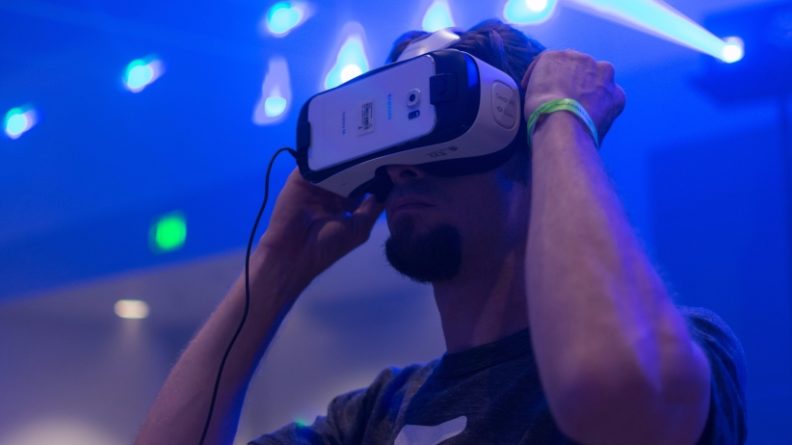Interactive

Kaltura, Selvz Execs: Challenges, Confusion Remain About VR
Story Highlights
It’s still early days for virtual reality (VR) and several challenges remain for the technology, according to executives at Kaltura and VR company Selvz.
The “most challenging” VR content development scenario today is the creation of a live 360 video experience, Iddo Shai, Kaltura director of product marketing, said Dec. 6 during a Kaltura webinar on “VR and the Future of Video.”
“Most companies out there … will not probably engage in this sort of challenge in the next six to 12 months” when creating VR content, he said. There are, however, actually fewer challenges when planning a live 360 shoot because one would, if shooting a basketball game for example, just place the camera in the center of the court, and allow viewers to then look to the left and right, he said.
However, it’s in the processing of the video that the “real challenges” kick in with live VR “because you need to do the stitching in real time and you also need to do transcoding in real time and that requires a lot of computer power to do all of it very, very quickly and to do it well,” he said.
Shai added: “You have to make sure you have the right equipment in place in order to capture all the content and process it in real time.” To distribute the content, meanwhile, “you need to push all this video content to the cloud and you want to push it in the highest quality possible – 4K, if possible,” he said, noting that a lot of bandwidth is required.
Kaltura doesn’t support 4K VR “at the moment,” but “I’m sure it will come, he said, without projecting the timing for such support by his company.
“We’re still in a very early stage” with VR and “we’re all learning and discovering” things about the technology, Eduardo Yeh, Selz CEO and co-founder, said on the webinar. His company, created in 2011, helps businesses establish a presence in VR, he said.
Yeh predicted that “soon, every smartphone will be VR-enabled,” and it’s “the platform that is going to drive VR into the mainstream.”
But, for now anyway, mixing 2D video with 360-degree video “addresses a number of challenges that still exist in the first-generation mobile VR,” he said. Those challenges include battery efficiency, the possibility of devices overheating, and the management of users’ quality expectations, he said.
“It is still a problem that when you watch 360 video for long periods of time, it really drains your battery pretty fast” on whatever device the content is being viewed on, he said. Also, when watching 360 video, users often get a message to turn off the device to let it cool off, he said, adding: “That sort of breaks the total experience.”
But if content switches back and forth from 2D to 360 video, that reduces the possibility of the device overheating, he said, calling the mixing of 2D and 360 video a “near-term solution” to those problems.
Negative feedback that Selvz often hears from viewers is about the quality of the video resolution when watching 360 video, he also said. That’s a limitation of the current-generation devices, but resolution “will improve” in next-generation devices, he said. There are no such complaints about the 2D video, he said.
There is “a little bit of confusion” in the market about 360-degree video, he said, noting that not all 360-degree video is VR. Some 360-degree video content is non-immersive and can just be viewed on a mobile device or computer using a mouse, while the immersive form of 360-degree video requires a headset like the various VR platforms. There are two main VR content types, meanwhile, he said, pointing to video-based content that is created with cameras and computer-generated content like games and interactive simulations, he said.
While Cardboard VR is “important” and “almost like a gateway into VR,” it has “a very low return rate” among users, he said, adding: “It is not something that people go back to … every day like the high-performing mobile VR systems” that include Samsung VR and the new Google Daydream.









